

Many jobs are common across all U.S. states. Jobs like educators, food service workers, and government employees are necessary to sustain a population regardless of the state. But each state is also unique and has its own history, geography, and demographic makeup — as well as its own industrial makeup, with certain jobs and industries much more common compared to other states.
24/7 Wall St. reviewed the largest industry in each state based on total GDP contribution from the U.S. Bureau of Economic Analysis. The dominant industries in each state are as distinct as farming, computer manufacturing, oil extraction, and broadcasting.
The health of these industries to a large extent determines the health of the overall state economies. The oil and gas extraction industry, for example, has been on the decline in recent years as oil prices plunged from 2014 to 2016. As the largest industry in Alaska, its decline helps explain why the state is one of the fastest shrinking state economies. Here is a full list of the fastest growing and shrinking state economies.
In the vast majority of states, the real estate sector is the largest contributor to GDP. The sector was excluded from our analysis, as housing is a universal need irrespective of geography and fails to illuminate regional economic differences. Another sector we excluded for similar reasons was the government sector.
The largest industries in each state vary considerably in size. Vermont’s largest industry, ambulatory health care services, generated $1.5 billion in 2017. Meanwhile, Texas’s oil and gas extraction sector generated $197.5 billion in 2017 — more than the entire GDP of Montana, Vermont, Wyoming, and South Dakota combined. Texas is home to oil and gas giant Exxon Mobil, the largest company in the state. Not surprisingly, many of the largest companies in each state are in the largest industry. These are the largest companies in each state.
Click here to see the largest industry in every state
Click here to read our methodology

Alabama: Ambulatory health care services
> Industry GDP contribution: $9.3 billion (4.8% of total)
> Industry workforce: 97,260 (7.1% of total employment)
> 5 yr. Industry GDP change: +16.2%
> Avg. industry salary: $62,926
[in-text-ad]

Alaska: Oil and gas extraction
> Industry GDP contribution: $11.0 billion (21.0% of total)
> Industry workforce: 3,522 (0.2% of total employment)
> 5 yr. Industry GDP change: -23.4%
> Avg. industry salary: $224,827

Arizona: Ambulatory health care services
> Industry GDP contribution: $14.7 billion (5.0% of total)
> Industry workforce: 165,710 (7.7% of total employment)
> 5 yr. Industry GDP change: +18.9%
> Avg. industry salary: $62,128

Arkansas: Management of companies and enterprises
> Industry GDP contribution: $5.4 billion (4.7% of total)
> Industry workforce: 34,785 (0.6% of total employment)
> 5 yr. Industry GDP change: +33.9%
> Avg. industry salary: $115,048
[in-text-ad-2]

California: Computer and electronic product manufacturing
> Industry GDP contribution: $110.5 billion (4.3% of total)
> Industry workforce: 278,416 (0.3% of total employment)
> 5 yr. Industry GDP change: +43.5%
> Avg. industry salary: $183,992

Colorado: Oil and gas extraction
> Industry GDP contribution: $16.2 billion (5.0% of total)
> Industry workforce: 8,555 (0.2% of total employment)
> 5 yr. Industry GDP change: +112.2%
> Avg. industry salary: $184,211
[in-text-ad]

Connecticut: Insurance carriers and related activities
> Industry GDP contribution: $18.3 billion (7.6% of total)
> Industry workforce: 57,425 (2.1% of total employment)
> 5 yr. Industry GDP change: +8.1%
> Avg. industry salary: $141,430

Delaware: Insurance carriers and related activities
> Industry GDP contribution: $9.1 billion (14.2% of total)
> Industry workforce: 5,595 (1.9% of total employment)
> 5 yr. Industry GDP change: +48.4%
> Avg. industry salary: $86,134

Florida: Ambulatory health care services
> Industry GDP contribution: $45.0 billion (5.1% of total)
> Industry workforce: 501,127 (7.0% of total employment)
> 5 yr. Industry GDP change: +22.5%
> Avg. industry salary: $63,459
[in-text-ad-2]

Georgia: Broadcasting (except Internet) and telecommunications
> Industry GDP contribution: $33.2 billion (6.5% of total)
> Industry workforce: 53,343 (0.5% of total employment)
> 5 yr. Industry GDP change: +44.2%
> Avg. industry salary: $102,386

Hawaii: Accommodation
> Industry GDP contribution: $4.1 billion (5.1% of total)
> Industry workforce: 41,976 (1.1% of total employment)
> 5 yr. Industry GDP change: +1.5%
> Avg. industry salary: $50,431
[in-text-ad]

Idaho: Farms
> Industry GDP contribution: $4.0 billion (5.9% of total)
> Industry workforce: 18,915 (2.6% of total employment)
> 5 yr. Industry GDP change: +32.8%
> Avg. industry salary: $36,533

Illinois: Insurance carriers and related activities
> Industry GDP contribution: $35.0 billion (4.7% of total)
> Industry workforce: 116,559 (2.3% of total employment)
> 5 yr. Industry GDP change: +31.9%
> Avg. industry salary: $98,414
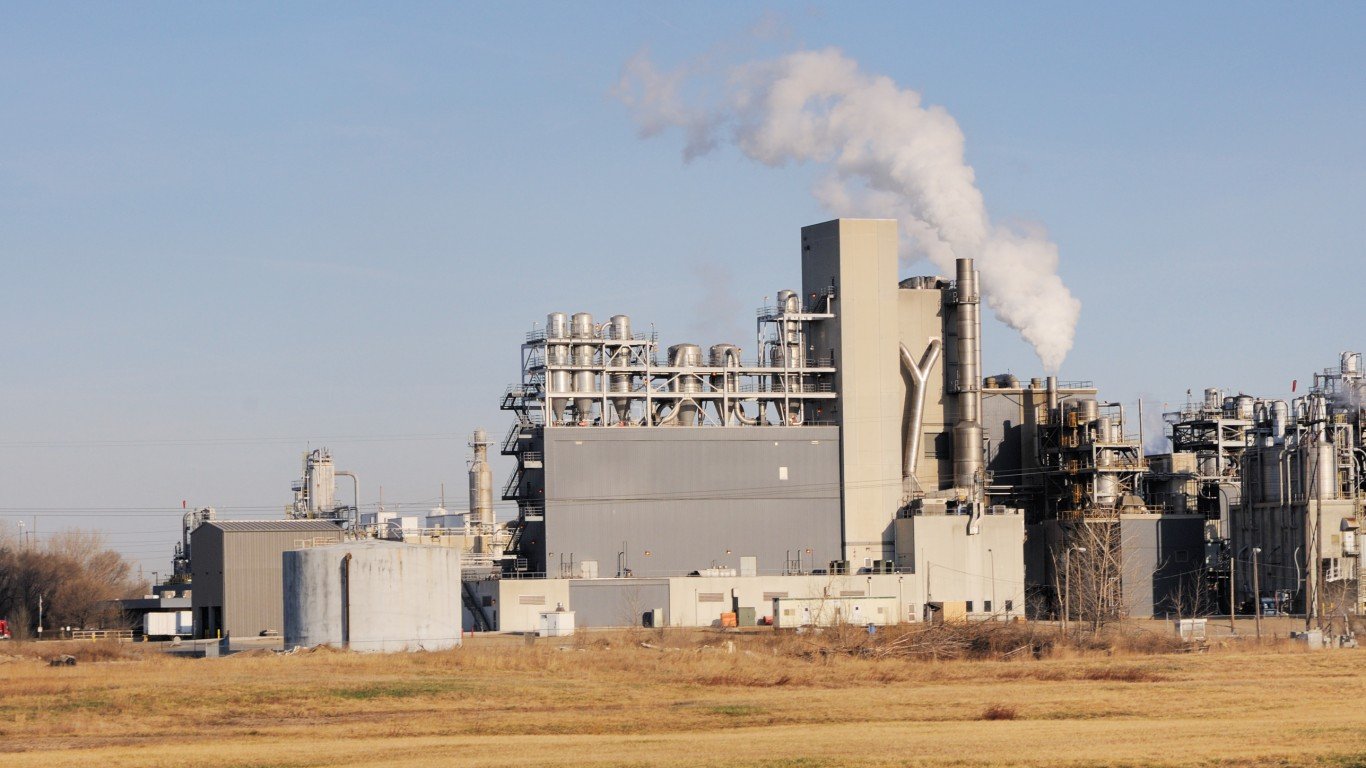
Indiana: Chemical manufacturing
> Industry GDP contribution: $18.9 billion (5.9% of total)
> Industry workforce: 29,998 (0.2% of total employment)
> 5 yr. Industry GDP change: -11.5%
> Avg. industry salary: $117,903
[in-text-ad-2]

Iowa: Insurance carriers and related activities
> Industry GDP contribution: $16.8 billion (10.0% of total)
> Industry workforce: 44,595 (3.4% of total employment)
> 5 yr. Industry GDP change: +51.4%
> Avg. industry salary: $83,175

Kansas: Insurance carriers and related activities
> Industry GDP contribution: $5.2 billion (3.5% of total)
> Industry workforce: 24,743 (3.2% of total employment)
> 5 yr. Industry GDP change: +27.9%
> Avg. industry salary: $74,040
[in-text-ad]

Kentucky: Ambulatory health care services
> Industry GDP contribution: $8.0 billion (4.4% of total)
> Industry workforce: 87,157 (6.6% of total employment)
> 5 yr. Industry GDP change: +15.9%
> Avg. industry salary: $65,821

Louisiana: Petroleum and coal products manufacturing
> Industry GDP contribution: $23.8 billion (10.4% of total)
> Industry workforce: 12,030 (0.1% of total employment)
> 5 yr. Industry GDP change: +9.3%
> Avg. industry salary: $129,640

Maine: Hospitals
> Industry GDP contribution: $2.7 billion (4.9% of total)
> Industry workforce: 33,157 (0.1% of total employment)
> 5 yr. Industry GDP change: +0.5%
> Avg. industry salary: $61,777
[in-text-ad-2]

Maryland: Ambulatory health care services
> Industry GDP contribution: $14.2 billion (3.9% of total)
> Industry workforce: 146,656 (7.6% of total employment)
> 5 yr. Industry GDP change: +20.9%
> Avg. industry salary: $65,696

Massachusetts: Ambulatory health care services
> Industry GDP contribution: $19.4 billion (4.0% of total)
> Industry workforce: 190,498 (4.4% of total employment)
> 5 yr. Industry GDP change: +17.2%
> Avg. industry salary: $67,026
[in-text-ad]

Michigan: Ambulatory health care services
> Industry GDP contribution: $18.2 billion (4.0% of total)
> Industry workforce: 206,999 (6.0% of total employment)
> 5 yr. Industry GDP change: +12.4%
> Avg. industry salary: $60,201

Minnesota: Ambulatory health care services
> Industry GDP contribution: $15.3 billion (4.7% of total)
> Industry workforce: 155,995 (4.6% of total employment)
> 5 yr. Industry GDP change: +23.8%
> Avg. industry salary: $74,847

Mississippi: Ambulatory health care services
> Industry GDP contribution: $4.6 billion (4.6% of total)
> Industry workforce: 50,206 (6.8% of total employment)
> 5 yr. Industry GDP change: +9.9%
> Avg. industry salary: $58,038
[in-text-ad-2]

Missouri: Ambulatory health care services
> Industry GDP contribution: $10.8 billion (3.9% of total)
> Industry workforce: 118,237 (5.2% of total employment)
> 5 yr. Industry GDP change: +11.5%
> Avg. industry salary: $63,966

Montana: Hospitals
> Industry GDP contribution: $1.9 billion (4.4% of total)
> Industry workforce: 25,047 (0.1% of total employment)
> 5 yr. Industry GDP change: +17.2%
> Avg. industry salary: $62,957
[in-text-ad]

Nebraska: Farms
> Industry GDP contribution: $8.7 billion (7.9% of total)
> Industry workforce: 12,211 (2.9% of total employment)
> 5 yr. Industry GDP change: +19.3%
> Avg. industry salary: $40,346

Nevada: Accommodation
> Industry GDP contribution: $13.2 billion (9.3% of total)
> Industry workforce: 190,356 (0.8% of total employment)
> 5 yr. Industry GDP change: -5.7%
> Avg. industry salary: $40,760

New Hampshire: Insurance carriers and related activities
> Industry GDP contribution: $3.7 billion (5.1% of total)
> Industry workforce: 11,870 (1.7% of total employment)
> 5 yr. Industry GDP change: +27.6%
> Avg. industry salary: $87,686
[in-text-ad-2]

New Jersey: Ambulatory health care services
> Industry GDP contribution: $24.0 billion (4.4% of total)
> Industry workforce: 236,887 (7.6% of total employment)
> 5 yr. Industry GDP change: +17.5%
> Avg. industry salary: $62,348

New Mexico: Oil and gas extraction
> Industry GDP contribution: $10.7 billion (11.7% of total)
> Industry workforce: 4,132 (0.3% of total employment)
> 5 yr. Industry GDP change: +90.6%
> Avg. industry salary: $108,769
[in-text-ad]

New York: Monetary Authorities- central bank, credit intermediation, and related services
> Industry GDP contribution: $100.0 billion (7.1% of total)
> Industry workforce: 164,781 (1.5% of total employment)
> 5 yr. Industry GDP change: -14.1%
> Avg. industry salary: $153,307

North Carolina: Monetary Authorities- central bank, credit intermediation, and related services
> Industry GDP contribution: $21.7 billion (4.5% of total)
> Industry workforce: 89,604 (1.9% of total employment)
> 5 yr. Industry GDP change: -19.6%
> Avg. industry salary: $105,180

North Dakota: Oil and gas extraction
> Industry GDP contribution: $4.7 billion (9.4% of total)
> Industry workforce: 2,616 (0.3% of total employment)
> 5 yr. Industry GDP change: +66.8%
> Avg. industry salary: $134,604
[in-text-ad-2]

Ohio: Insurance carriers and related activities
> Industry GDP contribution: $25.4 billion (4.3% of total)
> Industry workforce: 109,185 (2.5% of total employment)
> 5 yr. Industry GDP change: +47.1%
> Avg. industry salary: $77,914
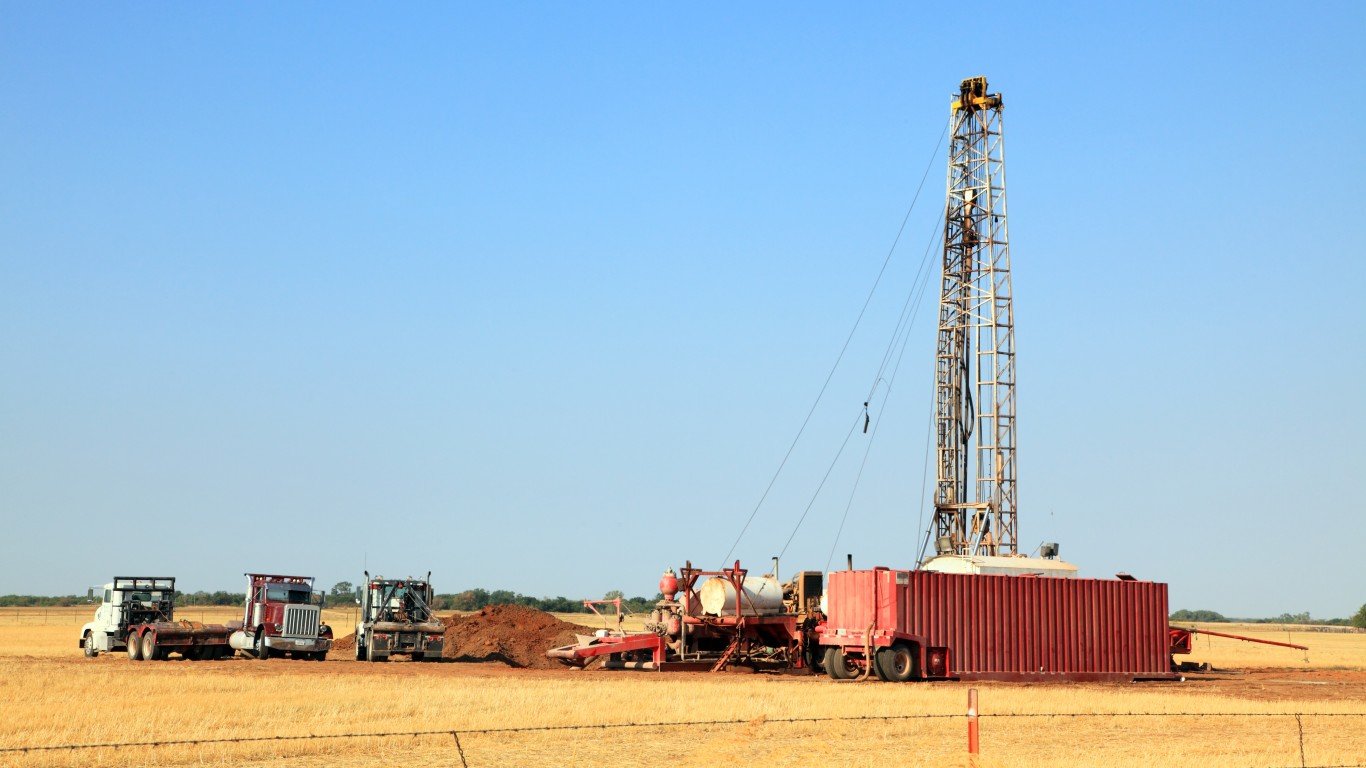
Oklahoma: Oil and gas extraction
> Industry GDP contribution: $38.6 billion (20.4% of total)
> Industry workforce: 18,001 (1.1% of total employment)
> 5 yr. Industry GDP change: +94.5%
> Avg. industry salary: $147,769
[in-text-ad]

Oregon: Computer and electronic product manufacturing
> Industry GDP contribution: $16.0 billion (7.8% of total)
> Industry workforce: 37,928 (0.2% of total employment)
> 5 yr. Industry GDP change: +15.1%
> Avg. industry salary: $135,938

Pennsylvania: Broadcasting (except Internet) and telecommunications
> Industry GDP contribution: $45.4 billion (6.5% of total)
> Industry workforce: 35,146 (0.3% of total employment)
> 5 yr. Industry GDP change: +41.1%
> Avg. industry salary: $88,266

Rhode Island: Insurance carriers and related activities
> Industry GDP contribution: $2.6 billion (4.9% of total)
> Industry workforce: 9,084 (1.9% of total employment)
> 5 yr. Industry GDP change: +37.5%
> Avg. industry salary: $85,307
[in-text-ad-2]

South Carolina: Ambulatory health care services
> Industry GDP contribution: $8.4 billion (4.2% of total)
> Industry workforce: 95,109 (5.7% of total employment)
> 5 yr. Industry GDP change: +32.7%
> Avg. industry salary: $61,990

South Dakota: Monetary Authorities- central bank, credit intermediation, and related services
> Industry GDP contribution: $4.5 billion (10.0% of total)
> Industry workforce: 16,363 (2.5% of total employment)
> 5 yr. Industry GDP change: -29.4%
> Avg. industry salary: $61,357
[in-text-ad]

Tennessee: Ambulatory health care services
> Industry GDP contribution: $16.8 billion (5.4% of total)
> Industry workforce: 152,061 (6.7% of total employment)
> 5 yr. Industry GDP change: +21.0%
> Avg. industry salary: $65,089
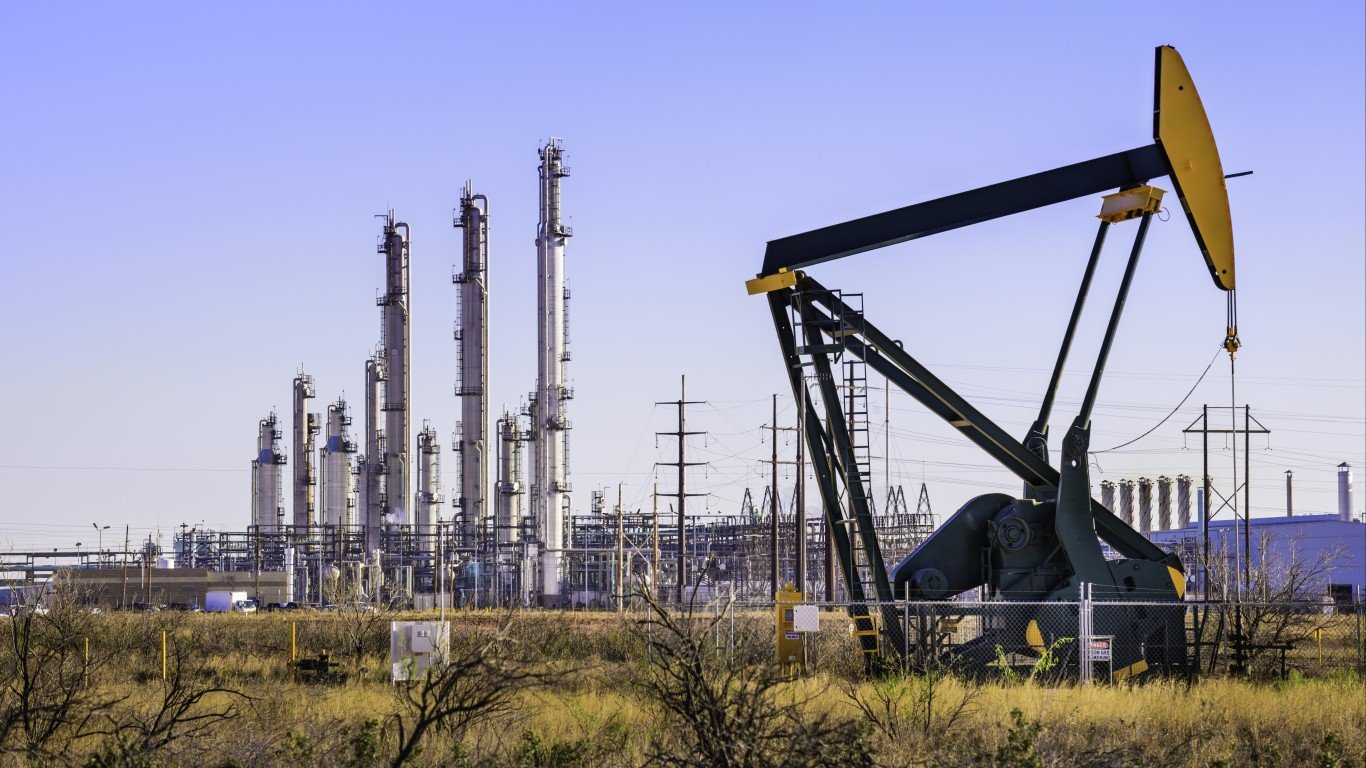
Texas: Oil and gas extraction
> Industry GDP contribution: $197.5 billion (12.2% of total)
> Industry workforce: 75,435 (0.5% of total employment)
> 5 yr. Industry GDP change: +60.3%
> Avg. industry salary: $191,717

Utah: Monetary Authorities- central bank, credit intermediation, and related services
> Industry GDP contribution: $6.8 billion (4.5% of total)
> Industry workforce: 39,226 (2.3% of total employment)
> 5 yr. Industry GDP change: -13.8%
> Avg. industry salary: $66,837
[in-text-ad-2]

Vermont: Ambulatory health care services
> Industry GDP contribution: $1.5 billion (5.0% of total)
> Industry workforce: 17,520 (4.7% of total employment)
> 5 yr. Industry GDP change: +16.8%
> Avg. industry salary: $57,371

Virginia: Ambulatory health care services
> Industry GDP contribution: $17.2 billion (3.7% of total)
> Industry workforce: 185,513 (5.5% of total employment)
> 5 yr. Industry GDP change: +20.4%
> Avg. industry salary: $63,554
[in-text-ad]

Washington: Ambulatory health care services
> Industry GDP contribution: $16.7 billion (3.5% of total)
> Industry workforce: 156,003 (4.5% of total employment)
> 5 yr. Industry GDP change: +28.3%
> Avg. industry salary: $64,501
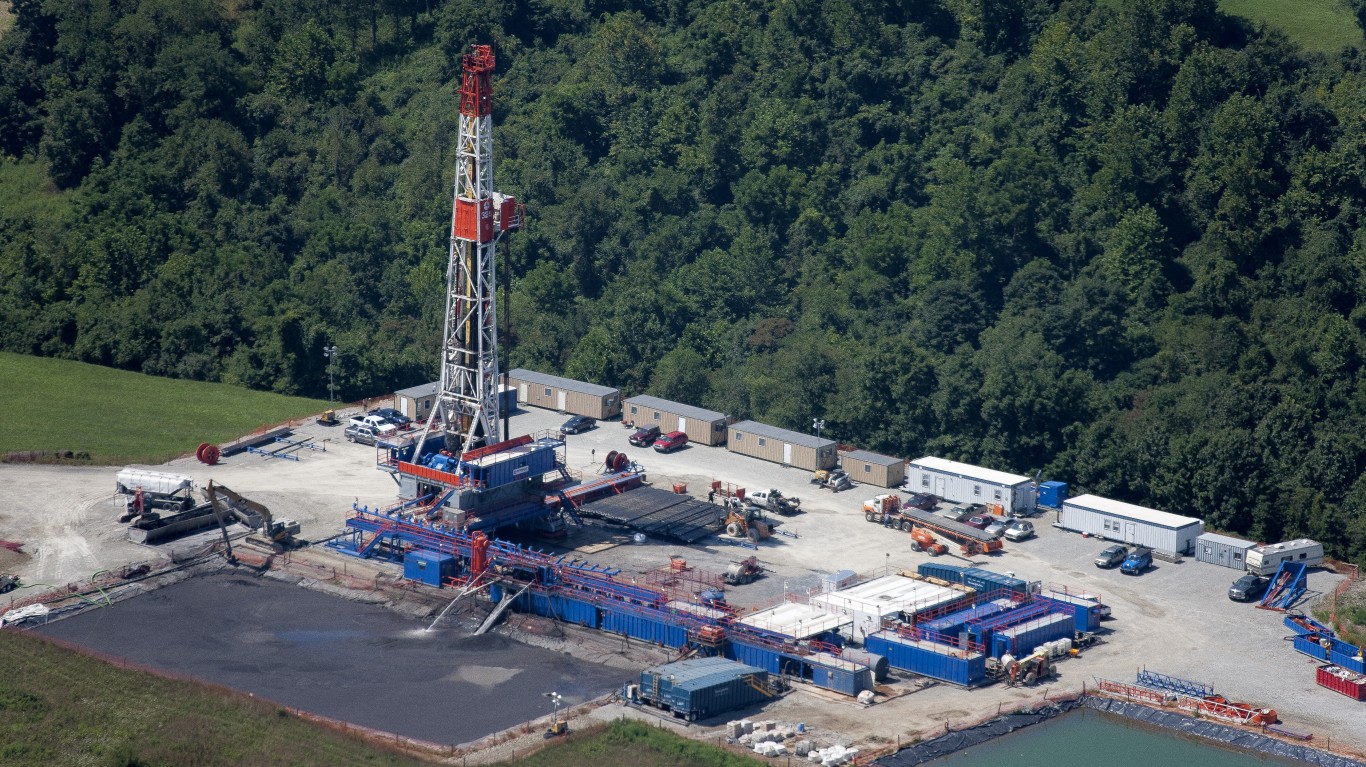
West Virginia: Oil and gas extraction
> Industry GDP contribution: $5.8 billion (8.4% of total)
> Industry workforce: 2,149 (0.4% of total employment)
> 5 yr. Industry GDP change: +408.8%
> Avg. industry salary: $93,331

Wisconsin: Insurance carriers and related activities
> Industry GDP contribution: $17.0 billion (5.8% of total)
> Industry workforce: 63,710 (2.4% of total employment)
> 5 yr. Industry GDP change: +39.0%
> Avg. industry salary: $75,163
[in-text-ad-2]
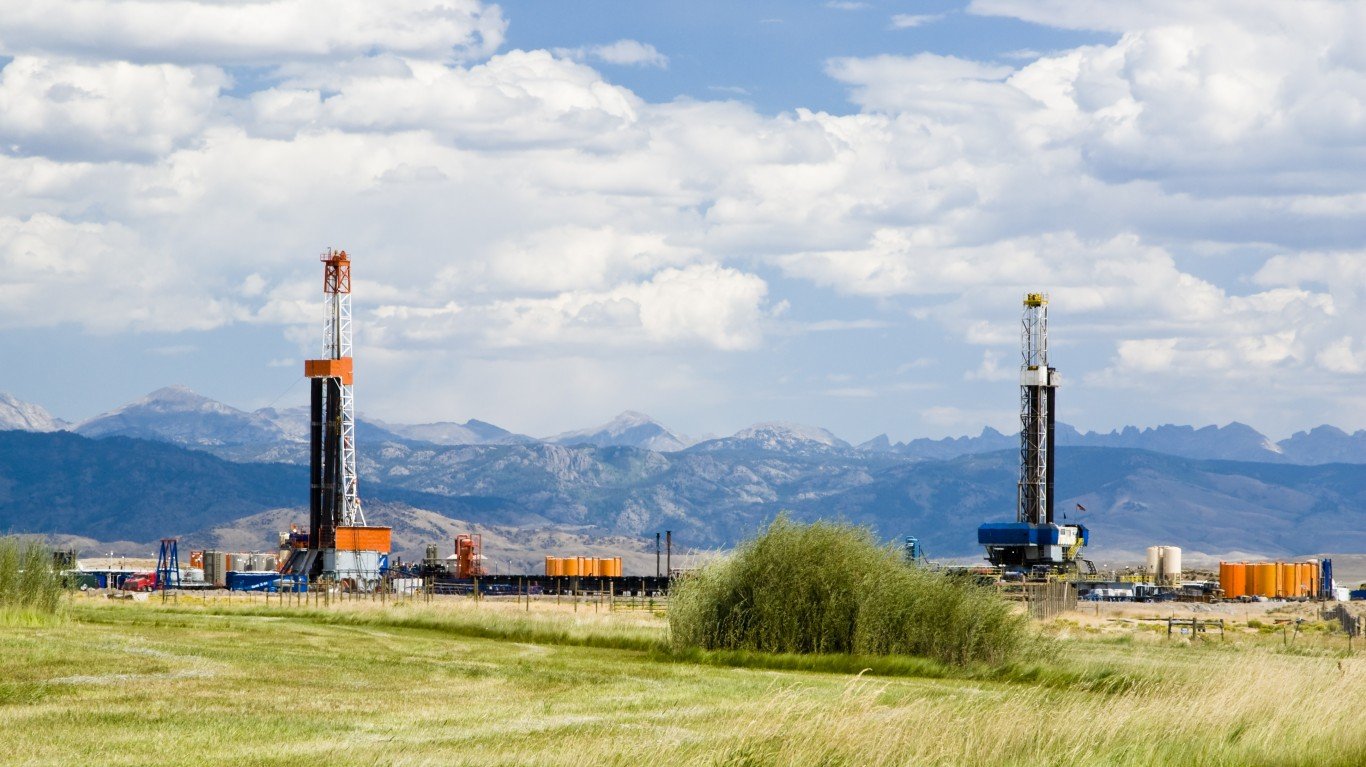
Wyoming: Oil and gas extraction
> Industry GDP contribution: $4.9 billion (12.8% of total)
> Industry workforce: 3,039 (0.7% of total employment)
> 5 yr. Industry GDP change: +37.0%
> Avg. industry salary: $113,739
Methodology
To identify the largest industry in each state, 24/7 Wall St. reviewed each state’s industries and their respective GDP contributions from the Bureau of Economic Analysis. All BEA data is as of 2017, the most recent period for which detailed data is available. With only a few exceptions, the largest industry in each state is real estate. In order to identify regional industrial differences, we excluded the real estate sector in our examination. All government sectors were also excluded. Only industries on the same subsector level were included, and as a result, broader categories such as manufacturing, construction and retail were not considered. Employment and wage figures for private employees in each industry came from the Quarterly Census of Employment and Wages. The QCEW and BEA industry data were aligned according to their North American Industry Classification System codes.
Take This Retirement Quiz To Get Matched With An Advisor Now (Sponsored)
Are you ready for retirement? Planning for retirement can be overwhelming, that’s why it could be a good idea to speak to a fiduciary financial advisor about your goals today.
Start by taking this retirement quiz right here from SmartAsset that will match you with up to 3 financial advisors that serve your area and beyond in 5 minutes. Smart Asset is now matching over 50,000 people a month.
Click here now to get started.
Thank you for reading! Have some feedback for us?
Contact the 24/7 Wall St. editorial team.
 24/7 Wall St.
24/7 Wall St. 24/7 Wall St.
24/7 Wall St. 24/7 Wall St.
24/7 Wall St.
